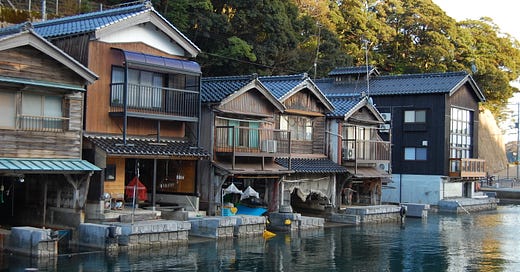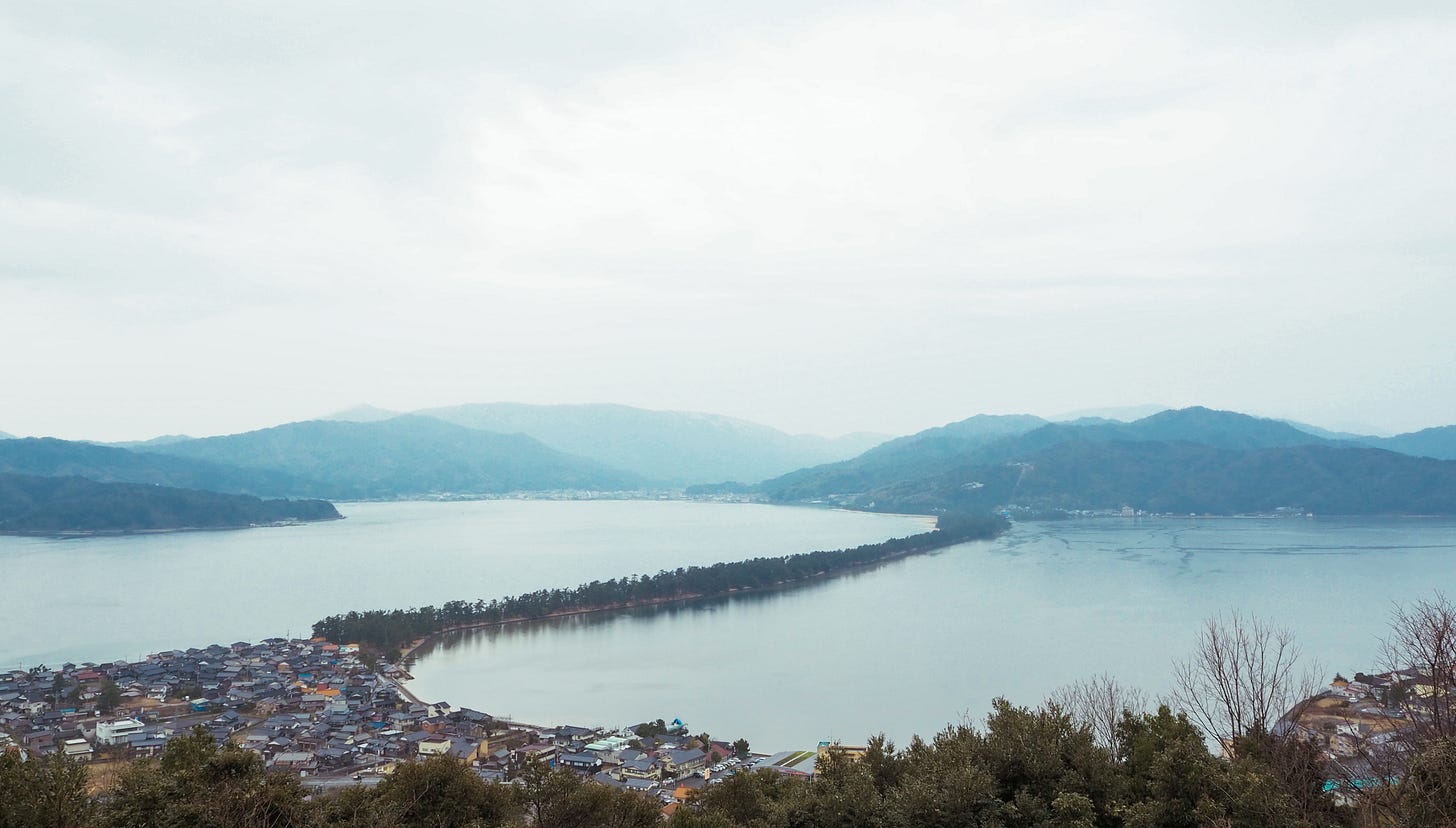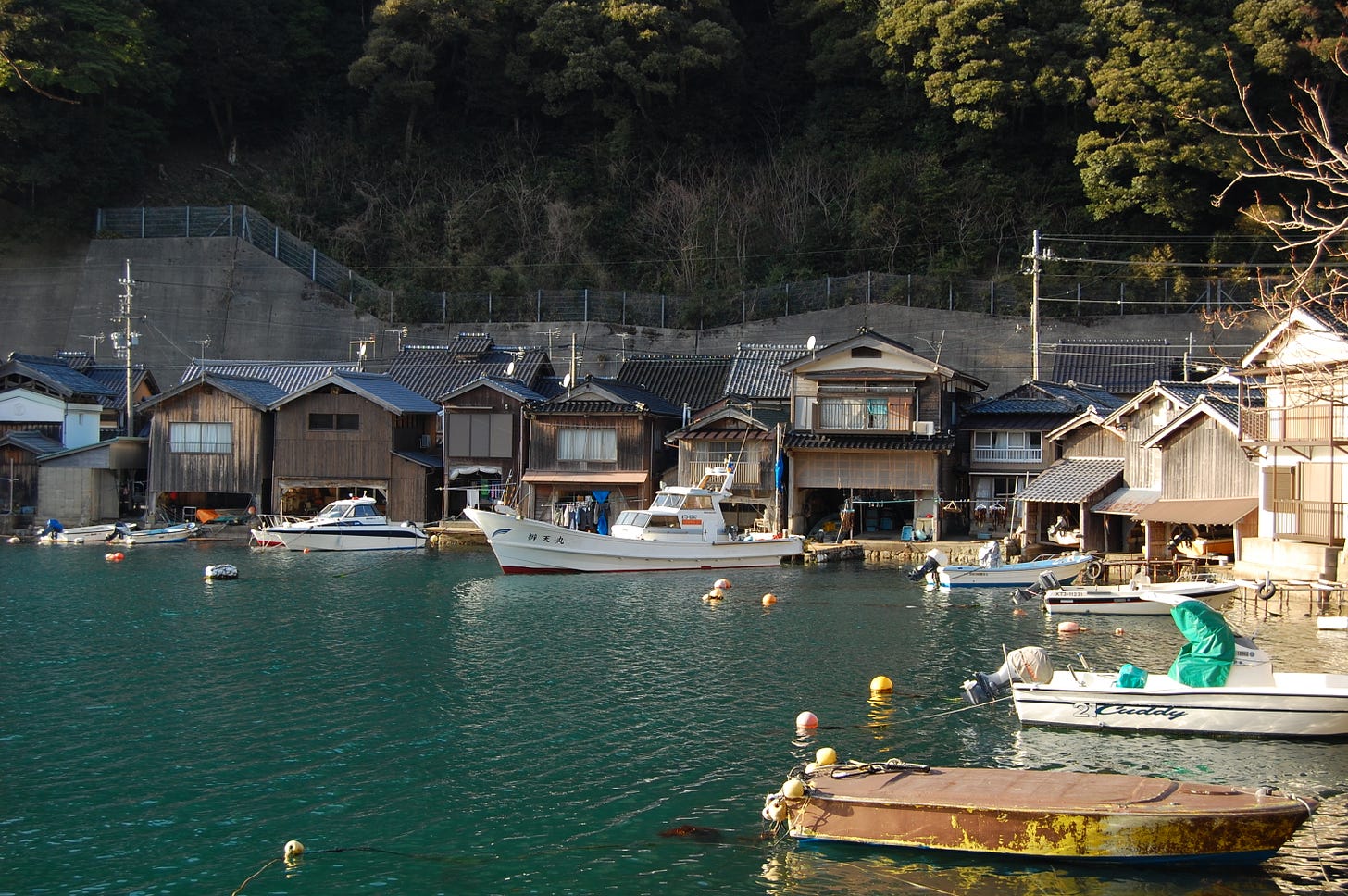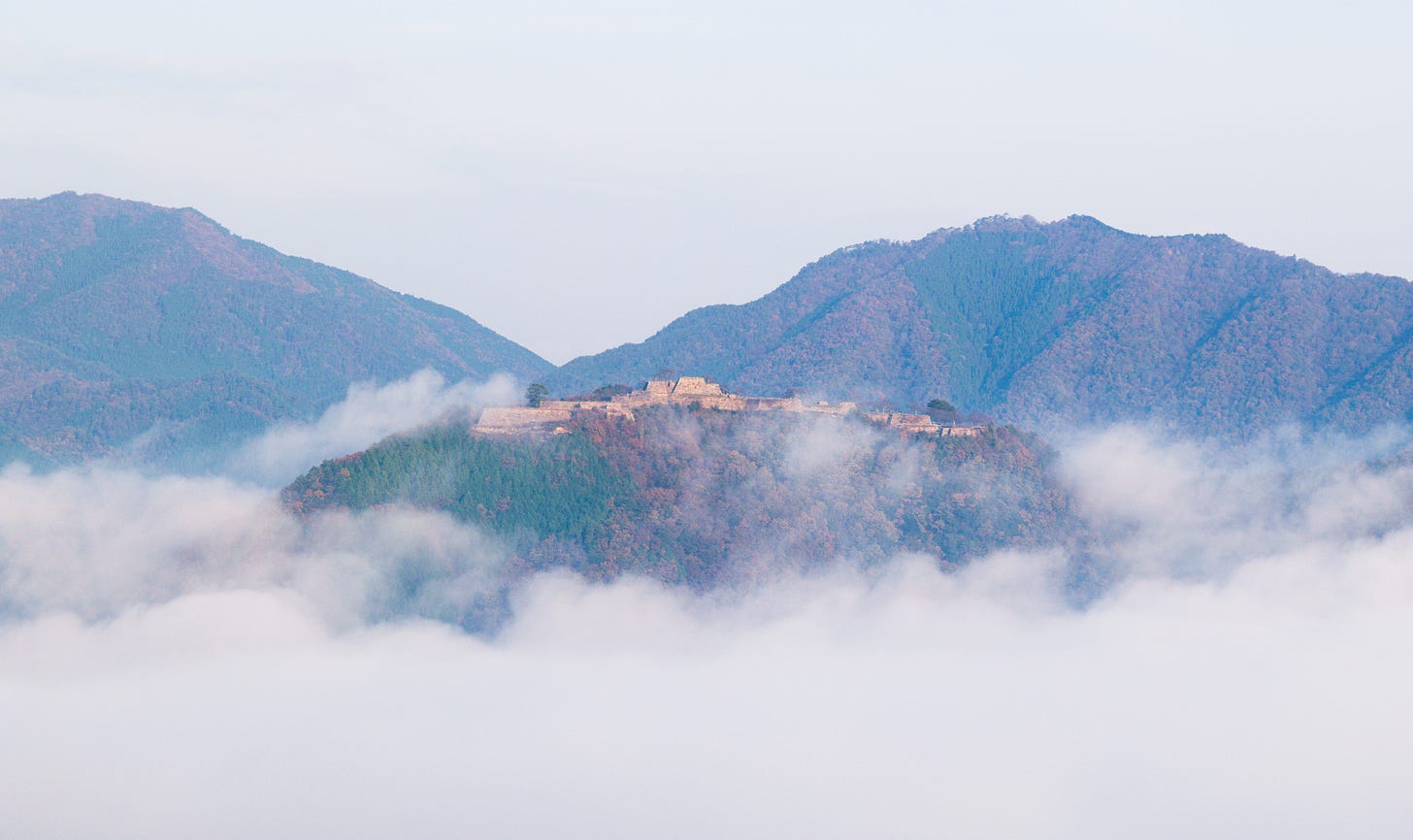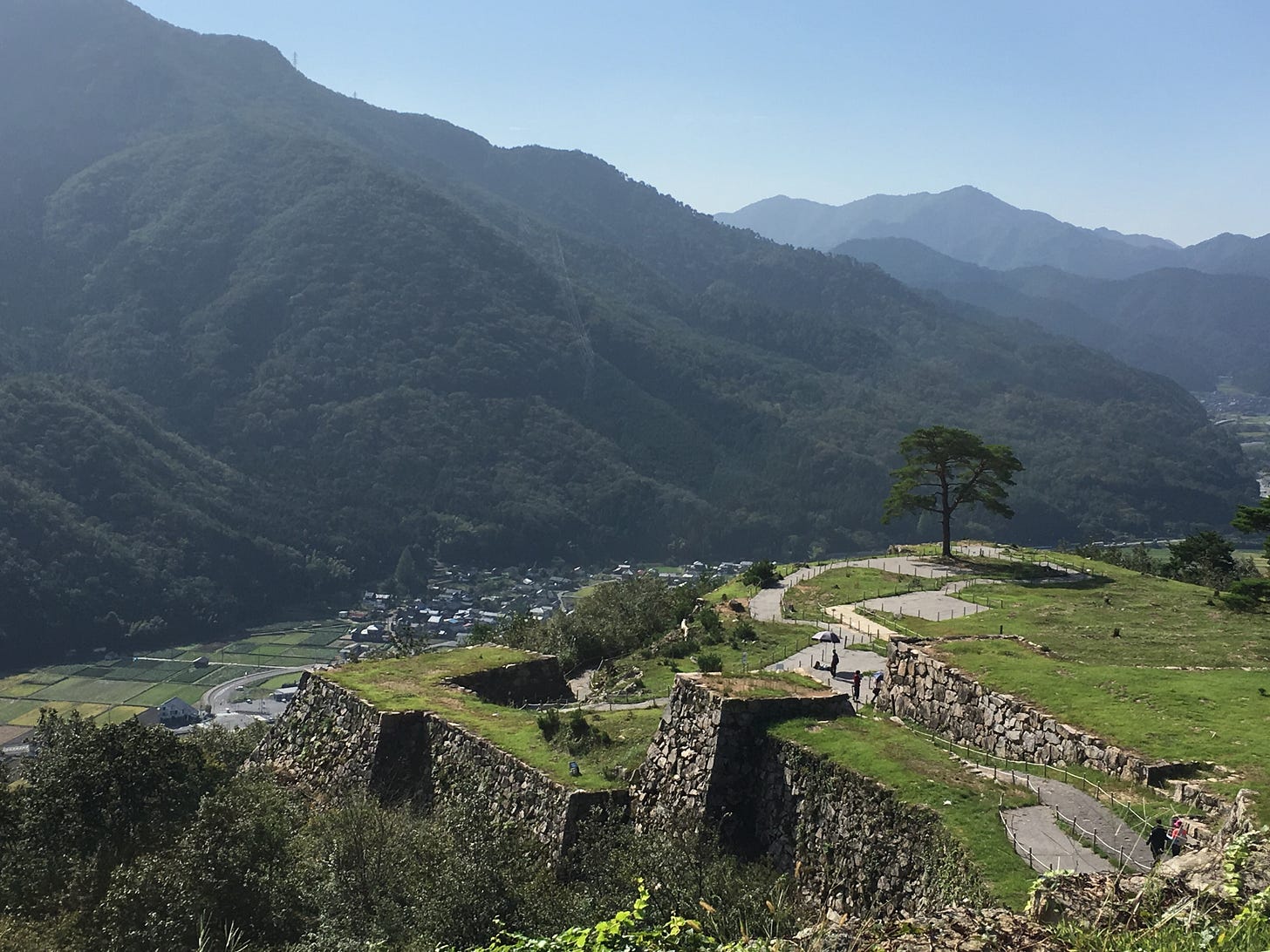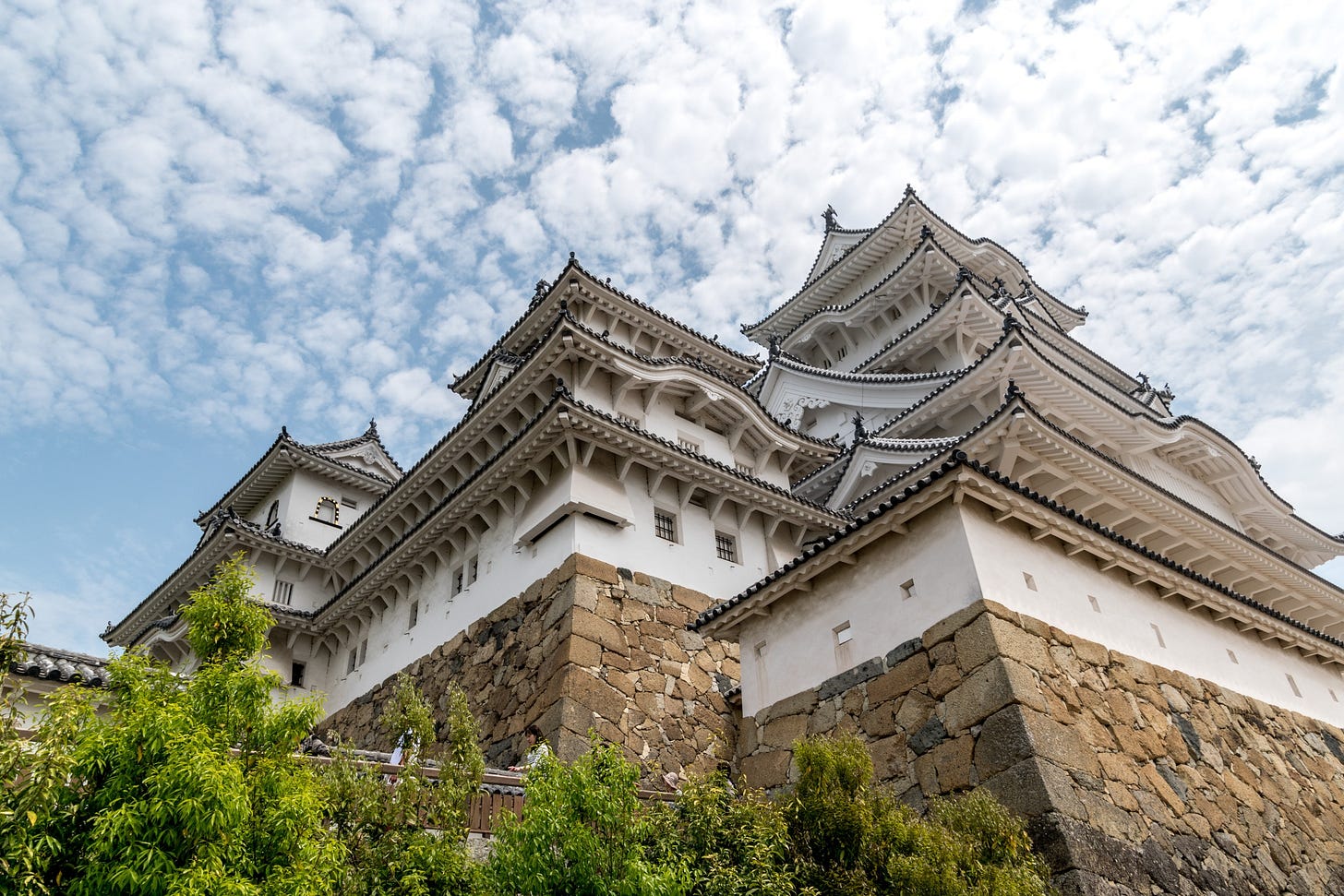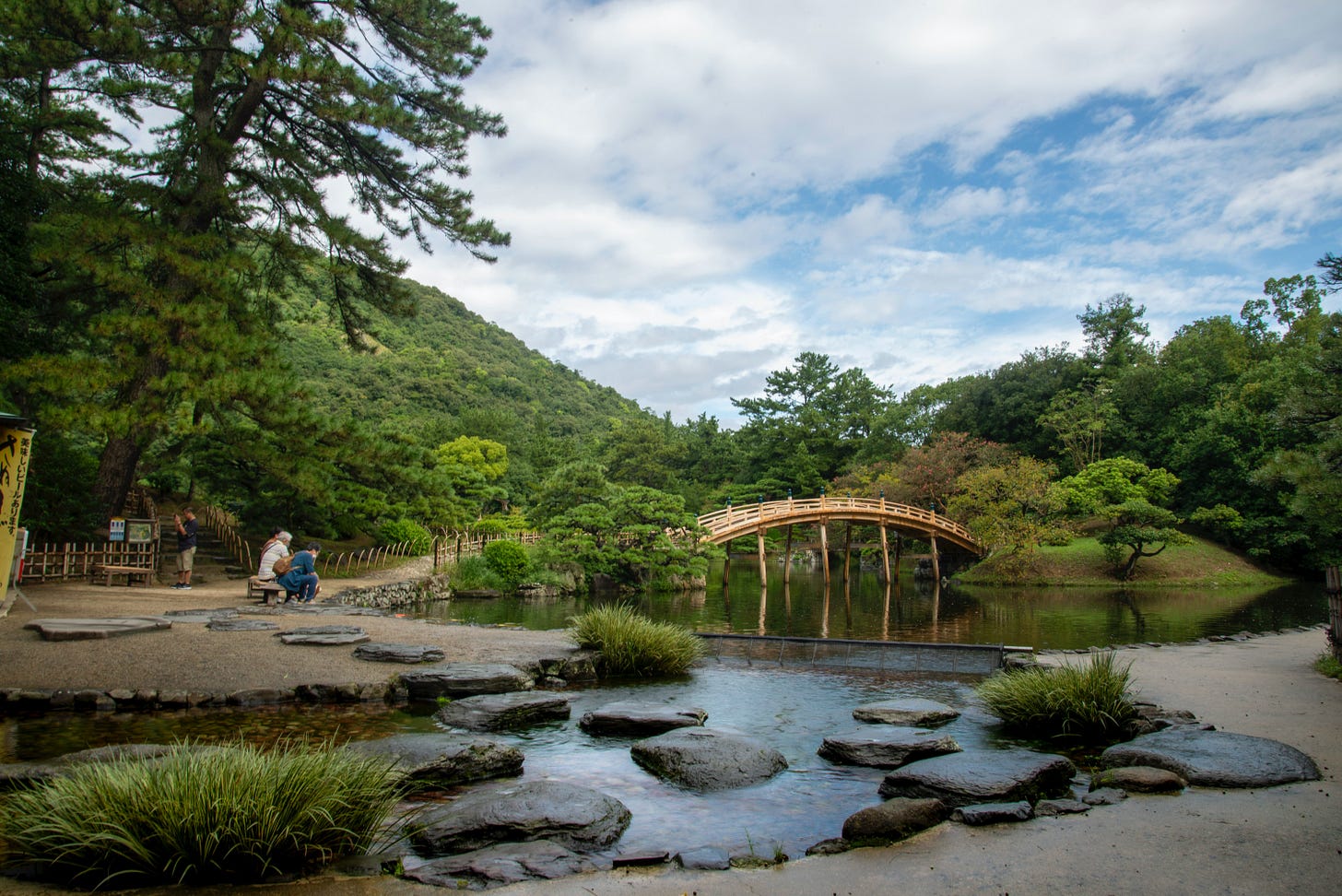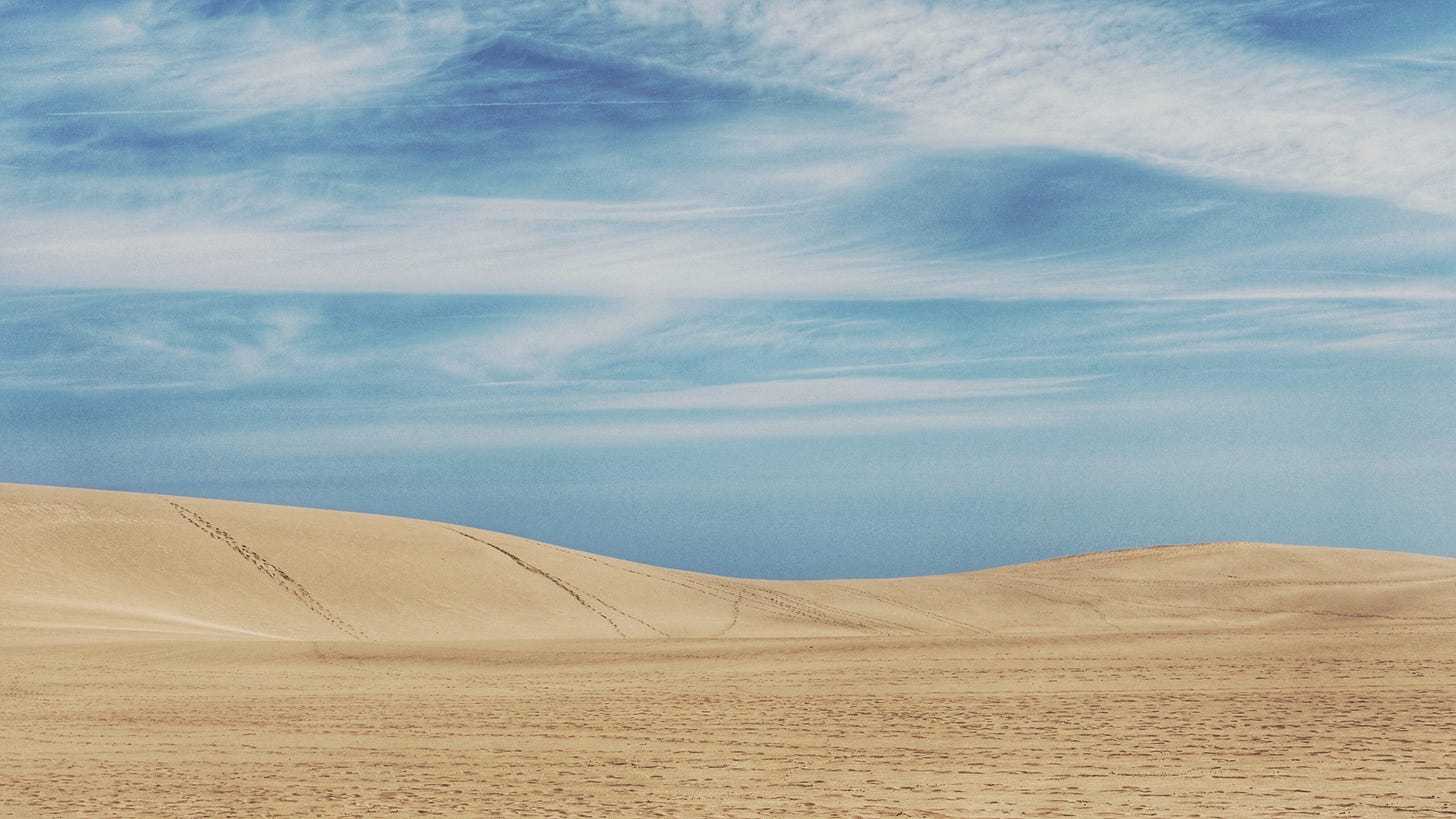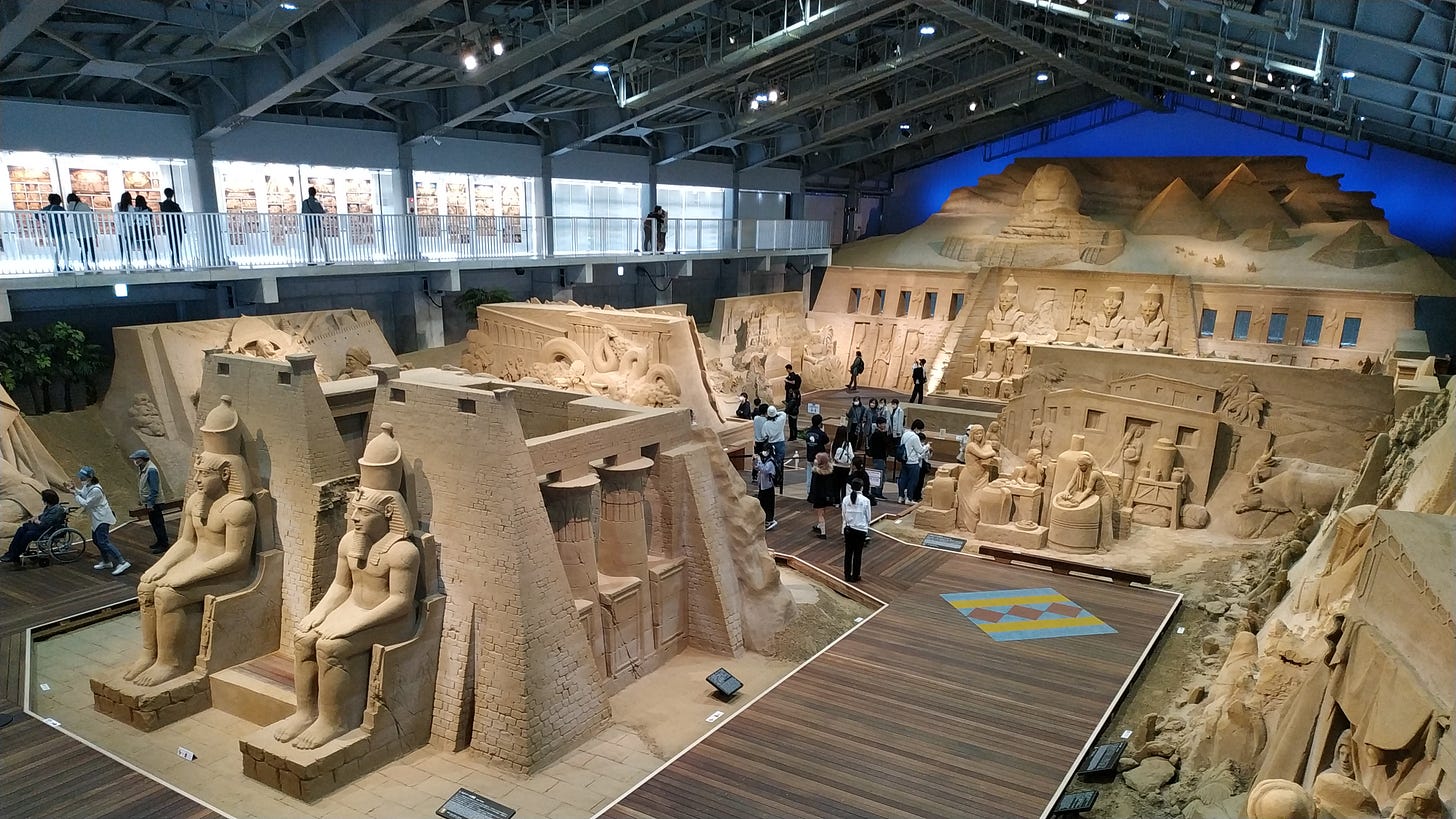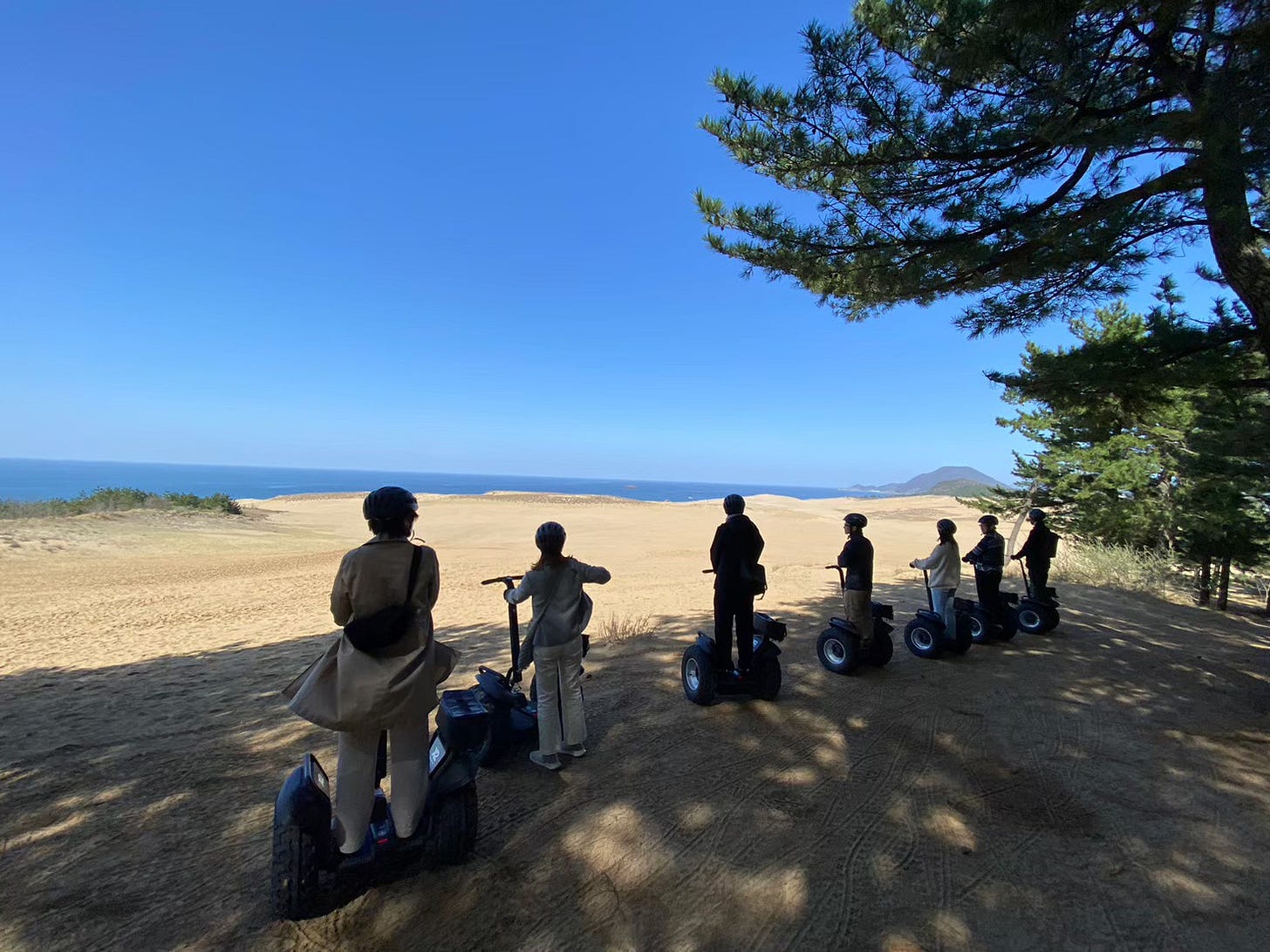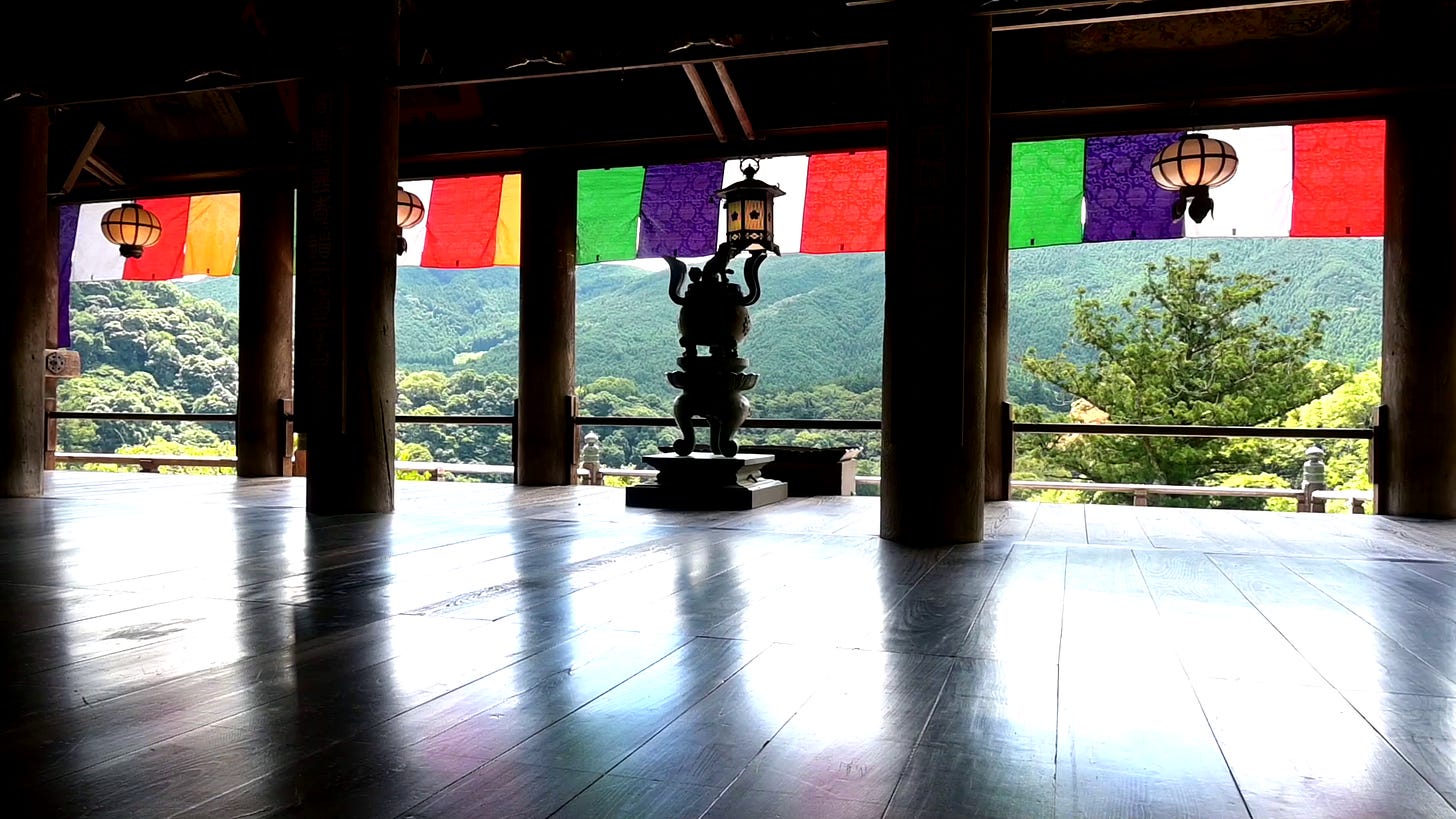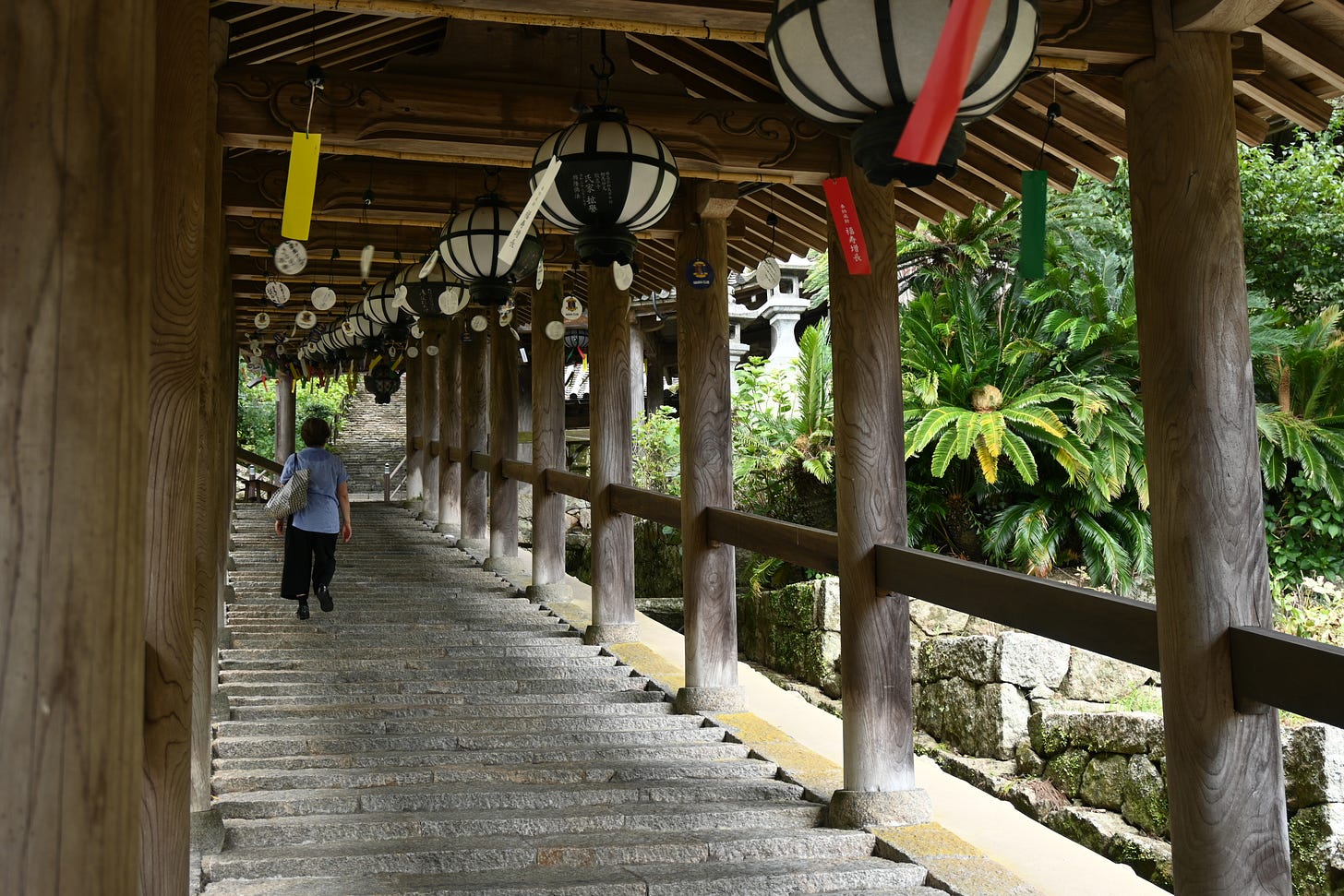Kansai and Beyond: a 5 day itinerary
Leave Kyoto and Osaka behind and you'll find these awesome hidden gems
For lots more hidden gems in the Kansai region, get yourself a copy of my latest book, Japan Out There: Kansai Edition.
I love Kyoto and Osaka - I love them to bits. But after a couple of days of touring temples or urban adventuring, I always find myself longing for somewhere fresh and new. And let’s face it: everyone who’s been to Japan has already seen these cities. Don’t you want to see somewhere they haven’t?
Luckily, you don’t have to venture too far away from Kansai’s big cities to be wowed by some totally unique and seriously underrated spots. And it’s not as if these are difficult to get to. The Sanyo Shinkansen heading out into the west from Osaka brings many hidden gems into easy reach. And for the more remote destinations, you have plenty of limited express trains to get you there and back in comfort.
Although that might sound expensive, it doesn’t need to be. This itinerary is designed for travellers using JR’s Kansai Wide Area Pass. At 12,000 yen for 5 days of unlimited travel, it’s an absolute steal. You can easily make the pass pay off by only visiting a couple of the places I’ve included. At the end of this article there’s a breakdown of the individual trips to help you judge how much value you’re getting.
Of course, you don’t need to visit a new place every day. For several places, you may want to take an extra day to explore (especially Amanohashidate, as you will see later). It’s also possible to base yourself in Osaka or Kyoto and make day trips to these places. However, making return journeys in one day is quite time-consuming, so you may find it’s more efficient to stay in the places I recommend.
Day 1: Amanohashidate and Ine
Getting there
Since many travellers opt to use Kansai Airport when coming to the region, the itinerary begins in Osaka. From here, you need to take 2 trains to Amanohashidate, changing in Fukuchiyama.
However, if you can, stay in Kyoto the night before. There are 4 direct trains between Kyoto and Amanohashidate every day, taking about 2 hours. I recommend taking the direct Hashidate train because it’s less hassle than having to change trains mid-journey. The first train will get you there at 10:40 am. (If you want to get there earlier, you can, but you’ll need to change trains.)
Pro-tip
If you’re staying in Kyoto, you should know that the Hashidate makes a stop at Nijo Station. This can be more convenient for boarding if you’re staying in the centre of the city, and there are plenty of accommodation options in that area.
What to do
Upon arriving at Amanohashidate, you have couple of options for navigating the sandbar. Walking the 3km finger of land takes around 45 minutes to cross. You’ll want to take your time though, and explore the changing views through the pine trees and from the sands at the water’s edge.
There are plenty of bicycle rental shops around too, allowing you to cover the route in around 15 minutes. If you're in a hurry, or you simply want to take in the sandbar from the sea, you can hop on the ferry that will get you across to the other side in about 10 minutes.
On the north side of the sandbar you’ll find the cablecar and chairlifts up to Kasamatsu Park, where you’ll get the best view of Amanohashidate. (I recommend getting a sightseeing pass that includes everything). At the top there’s also a small restaurant where you can get some lunch while taking in the view. However, my favourite place to eat here is St. John’s Bear, a seaside restaurant that you’ll find at the foot of the hill. The set lunches here are very reasonable, and there’s also a fairly wide selection of other dishes. Sit outside for the view if the weather’s fine.
After lunch, take the bus over to explore Ine, the traditional fishing village where the houses at the water’s edge have boat garages. The best way to enjoy the funaya (boat houses) here is by taking a trip on the sightseeing boat, which will take your around the bay in around 25 minutes.
So with Amanohashidate being one of Japan’s top 3 scenic spots, it seems like Ine didn’t want to be outdone, since it’s on the list of most beautiful villages in Japan. It’s not overly touristy, in fact, quite the opposite. It’s largely untouched as a rural village community, so you get to see ordinary folks going about their lives. It’s a magical place with an atmosphere that’s pretty much the polar opposite of what crowded Kyoto give you.
Pro-tip
If you want to make the most of Amanohashidate in one day, you should try to arrive as early as you can. It is possible to cross the sandbar on foot, go up to the viewpoint, have lunch and still have time to visit Ine, but you may find it’s a bit of a rush. It’s well worth staying overnight here to give yourself extra time, especially because after 5pm most of the other tourists have gone home and you’ll get the place all to yourself.
How to save money
The Amanohashidate Ine Sightseeing Pass is incredible value, as it includes the Ine Bay boat tour, the cable car/chairlift up to Kasamatsu Park, the boat rides between both ends of the sandbar, as well as unlimited rides on the local buses.
Helpful links
Where to stay
Amanohashidate has some great places to stay if you choose to overnight here, though many of them are at the pricey end of the spectrum. If you’re going to splurge, stay at one of the funaya-turned-b&b in Ine for an amazing unique stay in a traditional boathouse.
You should stay in Asago City if you’re visiting in the autumn, and you want to attempt to experience the sea of clouds at Takeda Castle Ruins. You’ll need to hop on the train down to Wadayama Station. The area around Wadayama Station has more options for dinner than Amanohashidate Station, so you might want to eat there. Another option of course is to pick up a lunchbox in Amanohashidate and eat it on the way over!
I recommend staying at Izumi Ryokan, a short walk from the station. The friendly staff make you feel like family, and will get you all prepared for an early morning sea of clouds trip, including reserving you a seat in the community taxi. There are more accommodation options here than near Takeda Station.
Day 2: Takeda and Himeji
Takeda in the early morning
I can’t think of many things in life that are worth a sub-5am wake up, but this is one of them. Catching the sea of clouds surrounding the ruins of Takeda Castle is also right up there on the list of things I’d recommend to anyone. Think of it this way: ask people if they went to Tokyo Skytree on their trip to Japan, and I imagine you’d get at least a 75% hit rate.
Not so with this. You have to visit Takeda in October or November, and even then, you only have roughly a 1 in 3 chance of the clouds appearing. So what kind of hit rate do you think this experience has with Japan travellers? Not a high one!
The best viewpoint for this stunning natural phenomenon is a place called Ritsuunkyo on the side of a mountain opposite the ruins. If you’re brave, you can walk up in the dark, but taking a taxi is best.
Pro-tip
Layer up, because you’ll easily get cold up the side of this mountain, but later on, you’ll want to peel some off as it gets warmer. The other 2 essentials are a thermos of something hot, and a torch for the short hike uphill in the dark.
Takeda Castle Ruins in the morning
Takeda Castle ruins are known as the Machu Picchu of Japan, but there’s plenty that we don’t know about this spot. The exact date when construction started is unknown. We don’t know precisely why it was abandoned. And we don’t know why the foundations are still there.
However, you’ll have plenty of time to ponder these mysteries after (hopefully) experiencing the sea of clouds. The shared taxi will drop you off at Takeda Station in plenty of time to get to the ruins by 9 a.m.
There aren’t a great many options for breakfast in Takeda. Powan opens at 8am, you can take a short walk to the Lawson convenience store across the river, or just pack yourself a breakfast the night before.
Helpful links
How to save money
The Tenku Bus has a 1 day all-you-can-ride ticket for 500 yen. It looks cheaper than 2x260 yen there and back - except, if you walk down the path that starts next to the ruins entrance, you can easily get back in around 25-30 minutes. The Tenku Bus has a lousy timetable too, so just take it going up.
Pro-tips
The bus to the ruins is cash only - they won’t accept any SUICA or ICOCA cards.
Takeda Station has a limited number of luggage lockers - but you may prefer to leave your bags at your accommodation.
Amanohashidate in the morning
An overnight stay here gives you a golden opportunity to capture the beauty of the sandbar and seascapes in the morning, before the majority of tourists arrive here. Café du pin is a great choice for breakfast, with a view of the iconic swing bridge you need to cross to get onto the sandbar.
When you’re finished, to get to the Takeda Castle ruins, you’ll need to ride 3 or 4 trains, depending on the timing. You’re aiming for Takeda Station, rather than Wadayama Station. This is the closest for the Tenku bus service. I recommend checking in advance to see which train connects up the best with the bus. You may also find you have to wait at Wadayama for your local train connection to Takeda. You can use this to your advantage to get some lunch there, since there aren’t lots of options around Takeda Station.
Himeji Castle in the afternoon
The White Heron castle hardly needs any introduction. I was tempted to leave it out of this itinerary, since I imagine a lot of people visit it on their 2nd or 3rd trips to Japan. But the thing is, having visited a lot of castles here, there are only a handful that I’d revisit. Himeji is one of them. It’s easy to lose track of time exploring all the different views from the top, or the endless photo opportunities all over the site.
Getting there
From Takeda it takes about 100 minutes to Himeji, with one change of trains at Tera-mae. If you leave any later than 12:45pm, you won’t be able to arrive before Himeji Castle closes. This is perfectly achievable, especially if you just walk down the side of the hill back to the station (the path starts next to the ruins entrance).
Pro-tip
You don’t need to take the train all the way to Himeji Station. Kyoguchi Station is a 20 minute walk to the east of the castle.
Where to eat
Himeji might seem far away from Osaka, but it’s still in Kansai. That means that Okonomiyaki is the perfect dinner choice, especially if you’re visiting in the autumn and the evening’s chilly. Bonanza is a cheeful and cosy Okonomiyaki restaurant tucked in one of Himeji’s covered shopping arcades.
Where to stay
Those of you who got up early for the sea of clouds will be pleased to hear that the plan for day 3 doesn’t require such an early start. That’s why I’m recommending the Comfort Hotel here, so you can enjoy a leisurely buffet breakfast before heading out in the morning. It’s also very handy for the station - only an 8 minute walk away.
Day 3: Takamatsu
Getting there
Today we’re heading out westward on the shinkansen first, before changing to a slower liner train at Okayama to take us across to the island of Shikoku. The journey to Takamatsu only takes about 1 hour 30 minutes in total. Remember too that the Kansai Wide Area Pass allows you to use the fastest Shinkansen type - the Nozomi.
Takamatsu tends to be overlooked by many travellers who simply pass through on the way to Naoshima, the small art-filled island made famous by a certain spotty pumpkin. I think it’s unfair that Kagawa Prefecture’s capital city doesn’t get as much attention - so let me show you why.
Ritsurin Garden is our first port of call, a 13 minute bus ride south of Takamatsu Station. Just like the 3 most scenic spots in Japan (of which Amanohashidate is one), there’s the 3 greatest gardens, but - plot twist - Ritsurin isn’t one of them.
For the life of me, I can’t understand why. Either someone paid the selection committee a lot of money, or they were drunk, but Kairaku-en in Mito for me does not hold a candle to Ritsurin. Kenroku-en (in Kanazawa) and Koraku-en (in Okayama) - fair enough though, they definitely deserve to be on the list.
Where to eat
Lunch in Takamatsu is an easy choice - you have to try the famous Sanuki Udon. Sanuki is the old name for Kagawa, and the udon here are slightly chewy, made possible because they’re made from a special kind of wheat.
I remember the first time I came to Takamatsu, I had taken the Sunrise sleeper train down from Tokyo. My friend met me at the station, and from there he took me straight to an udon restaurant for breakfast. Yes, udon. For breakfast. Apparently Kawaga citizens love udon so much that it’s starting to damage their health. (Don’t ask about the high rates of type 2 diabetes here.)
Some udon restaurants close for the day after lunch here, so I’ve got two recommendations for you, just in case you want to have udon for dinner instead.
Udon Okajima - try to get there slightly early as queues can form!
Meriken-ya - just opposite the station (this is the place featured in the video)
Pro-tip
When ordering, go for the “small”. There’s nothing small about it. If you order anything larger, you may find it hard to finish.
After that udon, an afternoon at Shikoku Mura is just what you need to walk off all those calories. As the name suggests, (literally, Shikoku Village), this spot represents the island of Shikoku, and it does this with a collection of relocated buildings. Everything has some historical significance, and most buildings are from the Edo and Meiji periods.
The kabuki theatre - complete with ampitheatre seating - is perhaps the most impressive exhibit here. However there really is something for everyone, with a Meiji period lighthouse, parts of a traditional soy sauce factory, and a variety of thatched buildings used for residential and agricultural purposes.
You’ll get the most excitement from traversing the suspension bridge made from vines, as was traditionally used in nearby Tokushima prefecture.
You can reach Shikoku Mura in about 30 minutes from Takamatsu Station. Take a JR train to Yashima, and change to a shuttle bus to take you up the hill.
Where to stay
The train up to our destination for day 4 starts in Okayama, so I recommend staying there. My recommendation is the One-Five Okayama, which is a pleasant 20 minute walk from the station, (8 minutes on the tram), and in easy reach of lots of good eateries.
4. Tottori
Getting there
I don’t know why more people don’t visit Tottori. No actually, I do know - it’s because it doesn’t have a shinkansen connection. That is unfortunate, because a trip to Japan’s very own desert has to be a rite of passage for all travellers who truly want to know this country.
And part of that is dealing with the geography. Luckily for you, we’re starting off in Okayama, and the Super Inaba Limited Express is going to get us there in a little less than 2 hours. The Super Inaba doesn’t have a special streamlined body like many express trains here, but we’ll try one of those later.
To get to the dunes, take a city bus heading for Tottori Sakyu. It’s a good 20 minute ride, and although there’s only 1 bus every hour (there are alternatives at weekends), the departures do seem to sync up with train arrivals quite well.
The Tottori Sand Dunes stretch for about 16 kilometres along the Sea of Japan coast, and some of the dunes are 50 metres high! You’ll want to allow plenty of time for climbing up to the top and absorbing the unique panorama here. Camels and horses are on hand in case you want to take a ride too.
Once you’re finished with the dunes, Tottori’s famous Sand Museum awaits, with a staggering collection of sand sculptures that changes every year. Sculptors are from all around the world, and it’s difficult not to be bowled over by the sheer attention to detail, and the scale on display here. The admission price is very reasonable too!
Where to eat
Hidden away above the souvenir shop at the Sakyu Centre is a great restaurant known for its signature seafood bowl, as well as the excellent views from the second floor.
Pro-tip
Keep going up to the third floor to find a secret dunes viewing deck.
After lunch, it’s time for a different way to explore the dunes, this time atop a Segway. Yes, those contraptions you sometimes see policemen or airport staff riding. Here. At the sand dunes.
You don’t get to ride all over the dunes. No - you’re led on a specially managed course through a forest at the edge of the dunes, during which you’ll learn about the history of the desert and fascinating facts about the area. After this you’ll get a good chunk of time to roam around a kind of playpen area, complete with slopes and bumpy terrain, so you can show off your newly-acquired Segway skills. And the staff will even give you a bunch of photos and videos of your experience at the end.
Thankfully, for all the non-Japanese speakers out there, sessions at Sakyu Segway can be booked online. Just turn on your auto-translate and you’re all set. The staff don’t speak English, but don’t let this put you off - they’ll get you trained and riding safely in no time.
Of course, if you’re feeling a bit more adventurous and you’re visiting in the right season, you can give paragliding a try!
Pro-tip
The bus stop back to the station is just a few minutes walk from Sakyu Segway - just be sure to check the timetable beforehand. Alternatively, this is one of those times when taking a taxi is highly recommended. Expect to pay around 2000 yen for the journey.
After this packed day, you can sit back and relax on the Super Hakuto Limited Express that whizzes us back to Osaka, and yes, this time it has a streamlined shape! As we get back to Osaka quite late, I recommend getting something for dinner around Tottori Station, or of course, picking up a lunchbox to eat on the train.
Where to stay
Of course in Osaka you’re spoiled for choice when it comes to accommodation. I’m just going to recommend you hop on the Loop Line a couple of stops down to Taisho to stay at Hotel Sobial Osaka Dome. Just a few steps from the station, if the stylish decor doesn’t win you over, then the fantastic breakfast or the friendly staff will. This is my go-to hotel for Osaka, and I’m often disappointed to find that it’s fully-booked!
Day 5: Hasedera
Getting there
For the final day, take the Yamatoji Rapid service down to Nara, and then change to a local train bound for Sakurai. Helpfully, that’s also where you need to change to the Kintetsu line. Get off 2 stops later at Hasedera. The Kansai Wide Area Pass isn’t valid for this final train, so use your IC card or buy a ticket (240 yen one way).
Pro-tip
Google Maps and Navitime like to send you to Tsuruhashi to take the Kintetsu Line for most of this journey. It’s about 20-30 minutes quicker to do this, but you’ll need to pay the Kintetsu fare separately.
Hasedera is one of my favourite temples in all of Japan. It’s not a World Heritage Site or anything - but it’s about as close to that mythical image of a Japanese temple that you can possibly get.
I mean, in your imagination, does your ideal Japanese temple include hordes of tourists? Is it in the middle of a city? And does the street leading to it have somewhat tacky shops selling gaudy souvenirs?
See, that’s why you want to come to Hasedera. It’s slap bang in the middle of the countryside, which you can fully appreciate from the side of this mountain on the temple’s balcony. For me, this beats Kiyomizu Temple in Kyoto any day of the week.
The last time I visited, it was in the late summer, but there was a considerable breeze that morning. The covered stairway leading up to the temple had hundreds of small bells hung from the ceiling, adding a mystical soundtrack to my visit.
In the video for this itinerary, I talked about the pagoda you can also see here, set up in the trees, at one of the highest points of the temple grounds. But if you’re going to linger anywhere here, make it inside the main hall, with the view out over the mountains.
Where to eat
Hase town isn’t chock full of eateries, but it does have some good options. If you’re in the mood for traditional Japanese fare (and after visiting the temple, why wouldn’t you be?), drop in at Hatsuse Chojatei. For a slightly quirkier experience, visit the literal hole-in-the-wall Pizzeria Ashiato. It’s take-away only at this place, but it shouldn’t take you long to find a quiet spot to sit down and eat in this town.
I’ve deliberately left day 5 a little less busy than the rest of the itinerary. Once you’re finished at Hasedera, make the most of the pass to head back to Osaka for more sightseeing there. Nara is also a short hop away, and Kyoto further beyond.
The cost breakdown / sample timetable
This sample timetable should give you a good idea of exactly what’s possible in 5 days. You could pack even more in if you really wanted, and equally, a slower pace is possible while still getting good value out of the pass.
Use a journey planner like Navitime, Jorudan or Google Maps to check the up-to-date timetable details, though be sure to look for the JR routes if you’re using the rail pass.
Day 1
0747 Osaka
0821 / 0838 Kyoto
1040 Amanohashidate
Going to Asago City for Takeda Castle Ruins
1918 Amanohashidate
1956 / 2001 Fukuchiyama
2030 Wadayama
Total: 9420 yen (staying in Asago City)
Day 2
If staying in Amanohashidate
0950 Amanohashidate
1039 / 1047 Fukuchiyama
1114 / 1238 Wadayama (have lunch here!)
1245 Takeda
For Himeji Castle
1122 Takeda
1209 / 1221 Teramae
1304 Himeji
Total: 1170 yen (if staying in Asago City)
Day 3
0833 Himeij (Shinkansen)
0853 / 0905 Okayama
0958 Takamatsu
Back to Okayama
1710 Takamatsu
1803 Okayama
Total: 6820 yen (with reserved seat on the Shinkansen)
Day 4
0913 Okayama (Super Inaba Limited Express)
1104 Tottori
1840 Tottori (Super Hakuto Limited Express)
2104 Osaka
Total: 12,320 yen (with reserved seats)
Day 5
0905 Osaka
0924 / 0930 Tennoji
1003 / 1015 Nara
1043 / 1052 Sakurai
1058 Hasedera
1980 yen total (990 yen x2 for return to Osaka)
Grand total 31,710 yen (if staying in Asago City)
Saving with Kansai Wide Area Pass: 19,710 yen
Get your Kansai Wide Area Pass (Klook)
More details about the pass (JR)
My video guide about the pass:
*There are some affiliate links in this article: I will earn a small commission if you buy something, and it costs you nothing. Cheers!

